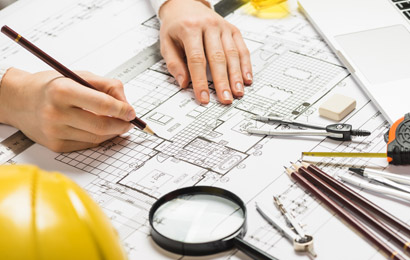- (5.0 Star)
Autodesk Revit MEP
Certification Training
We provide Online Instructor And Classroom Instructor led Live virtual classroom by certified trainers/ industry professionals
- Get Up to 35% discount
About Course
To take full advantage of Building Information Modeling, the Autodesk ® Revit® MEP Fundamentals training has been designed to teach the concepts and principles of creating 3D parametric models of MEP system from engineering design through construction documentation. The training is intended to introduce students to the software’s user interface and the basic HVAC, electrical, and piping/ plumbing components that make the Autodesk Revit MEP software a powerful and flexible engineering modeling tool. The objective is to familiarize students with the tools necessary to create, document, and print the parametric model. The examples and practices are designed to take you through the basics of a full MEP project from linking in an architectural model to construction documents
Key Features
You will get 100% job Assurance and life time e-placement support
classed taken by globally certified trainers
You will get 3 year Dedicated placement support
Courses are globally recognized & accredited

Course Type:
Certification Training
Live virtual classroom:
11,999/-
14,999/-
Regular classroom:
11,999/-
14,999/-
- Duration:
60 Hrs
- Enrolled:
113 Learners
- Eligibility:
Fresher 10th/10+2/Graduate with Auto Cad
- 5 Star:
15 Reviews
TOPICS INCLUDE:
- Introduction to Autodesk® Revit® MEP, its interface, including viewing, drawing, and editing commands
- Working with linked architectural files
- Creating and modifying views
- Understanding Autodesk Revit MEP systems in general
- Creating spaces and zones
- Analyzing heating and cooling loads
- Working with HVAC module to add air terminals, mechanical equipment, and create HVAC systems
- Working with the Piping module to add mechanical equipment as well as creating hydronic piping systems
- Working with fixtures, piping systems, and analysis tools in the Plumbing module
- Working with fire protection systems
- Working with components, circuits, cable tray, and conduits in the Electrical module
- Creating and annotating construction documents
- Adding tags and creating schedules
- Detailing in Autodesk Revit MEP
TABLE OF CONTENTS:
CONTENT 01 :
- Introduction to Autodesk Revit MEP,Workflow and BIM,Overview of the
- Interface,Standard Terminology
CONTENT 02 :
- Basic Drawing and Editing Tools,Drawing Aids,Helpful Editing Tools
CONTENT 03 :
- Starting Autodesk Revit MEP Projects,Linking in Architectural
- Projects,Copying and Monitoring Elements
CONTENT 04 :
- Creating Views,Duplicating Views,Adding Callout Views,Underlays,View
- Range,Elevations and Sections
CONTENT 05 :
- Understanding Autodesk Revit MEP Systems, About MEP Systems, Creating
- Systems – Overview,System Graphics Connecting Components, Analyzing
- Systems, Checking Systems Duct and Pipe System Tools
CONTENT 06 :
- Spaces and Zones, Using the System Browser with Zones
CONTENT 07 :
- Energy Analyses, Analyzing the Heating and Cooling Loads
CONTENT 08 :
- HVAC Systems,Mechanical Settings, Adding Air Terminals and Mechanical
- Equipment, Adding Ductwork,Working with Fittings Creating Duct Systems,
- Automatic Ductwork Layout
CONTENT 09 :
- Hydronic Piping Systems, Mechanical Settings-Piping,Drawing Piping,Creating
- Parallel Pipes,Working with Fittings and Accessories, Automatic Piping
- Layouts
CONTENT 10:
- Plumbing Systems, Adding Plumbing Fixtures,Drawing Piping for Plumbing Systems, Automatic Layouts, Plumbing Schedules, Fire Protection Systems
CONTENT 11:
- Electrical Systems,Electrical Settings, Placing Electrical Components, Electrical
- Equipment, Electrical Devices, Lighting Fixtures, Creating Power Circuits,
- Create a Switch System,Create Other Circuits, Cable Trays and Conduit, Adding
- Fittings, Electrical Panel Schedules, Adding Conduit and Panel Schedules
CONTENT 12:
- Construction Documents,Setting Up Sheets, Adding Revisions, Printing
- Sheets,Printing Options
CONTENT 13:
- Annotating Construction Documents, Adding Detail Lines and
- Symbols,Creating Legends • Content 14 : Tags and Schedules, Tagging Multiple
- Elements, Working with Schedules, Building Component Schedules,
CONTENT 14:
- Tags and Schedules, Tagging Multiple Elements, Working with Schedules,
- Building Component Schedules,
CONTENT 15:
- Detailing,Connecting a Callout to a Drafting View, Detail Lines • Detail
- Components, Annotating Details, Using Symbols, Patterning
Sent Us a Message

